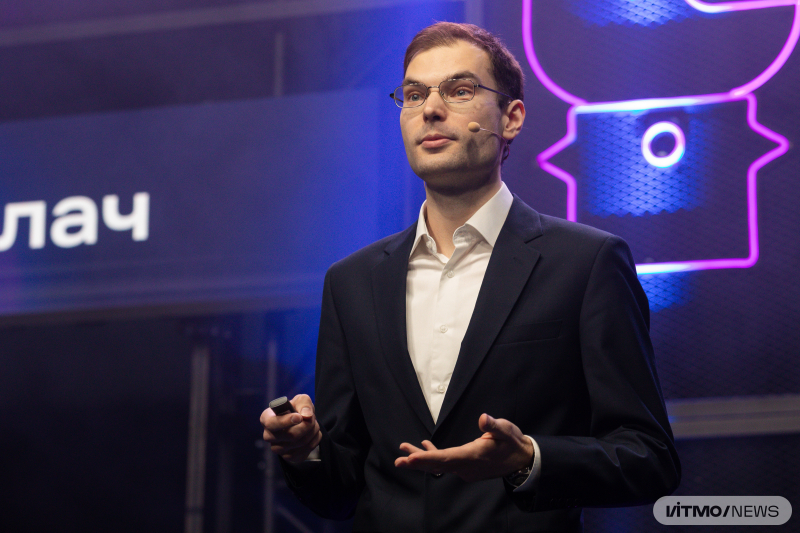Researchers from ITMO University, along with Nobel laureate Frank Wilczek, have suggested using low-frequency signals to study ultrafast magnetization oscillations in magnetic materials. The technology makes it possible to examine processes that are difficult to observe via other methods. The results of the study, supported by and ITMO’s 2030 Development Strategy and the Russian Science Foundation, were published in Physical Review Letters.

Credit: sakkmesterke / photogenica.ru
Magnetic materials are essential components in various electronic devices, including transformers, electric motors, sensors, household and medical appliances, and storage equipment. Their distinctive advantage is non-zero magnetization within the structure. The understanding of ferromagnetism and antiferromagnetism was a significant achievement of 20th-century quantum physics; however, research and discoveries in this field are still underway.
Magnetization switching plays a vital role in the performance of devices based on magnetic materials. This property is studied by a special branch of physics, namely ultrafast magnetism. For magnetization to switch, materials are traditionally exposed to light at a frequency higher than that of magnetization oscillations. However, if magnetization is already changing quickly – for some materials, it is in the terahertz region (10¹² Hz) – the method mostly ceases to work. The ITMO team and Frank Wilczek, the laureate of the 2004 Nobel Prize in Physics, came up with a new perspective on the issue.
“Picture this: you’re looking at a rotating disk with black and white fields; if the disk rotates slowly, you manage to see the contrasting fields, yet if it does it quickly, everything merges into one gray field. It doesn’t matter if you use your eyes or a camera for that – what does, however, is the ratio of the rotation frequency and the frame rate that your eye or the camera can perceive,” explains Maxim Gorlach. “Figuratively speaking, we want to show that it’s possible to see more than just a gray field, even if the disk spins fast.”

Maxim Gorlach. Photo by Dmitry Grigoryev / ITMO NEWS
Instead of a revolving disk, the researchers used a magnetic material that exhibits rapid magnetization oscillations in response to a pulse. As opposed to the traditional method, the physicists used a low-amplitude electromagnetic wave to observe these oscillations – as it passes through the material, the wave reflects, refracts, and changes its polarization state (i.e., the direction of the electric field oscillations). The transmitted and refracted light can say a lot about the magnetization oscillations.
“At first, oscillations seem to happen rapidly compared to the frequency of the incident wave; seemingly they don't affect its propagation in any way. But that’s not actually so: our calculations show that fast oscillations can be approximately replaced by an effective axion field. Its magnitude depends on not only the magnetization amplitude but also the initial phase of the oscillations. The axion field, in turn, affects the propagation of the electromagnetic wave and changes its polarization. The result is, we can find out the initial phase of the magnetization oscillations even if the signal is low-frequency,” says Leon Shaposhnikov, a Master’s student at ITMO and the first author of the paper.
Meanwhile, the electrodynamics of certain magnetic materials is described by the same equations as those used for the hypothetical particles first proposed by Prof. Wilczek – axions. This is called an effective axion response.
The team's theories advance not just ultrafast magnetism – but also the emerging field of time-varying metamaterials.
“In recent years, experimental physicists have learned to quickly change the parameters of artificial environments – metamaterials – in time; and the physics of these environments turned out to be rather promising. For instance, they exhibit light amplification processes. The mechanism is akin to that of a swing when we lean back and forth and use legs to build momentum. Both situations illustrate a parametric resonance. The intersection of time-varying metamaterials and ultrafast magnetism, however, remained unexplored. Our research proves that it’s a highly promising field,” explains Eduardo Barredo-Alamilla, a PhD student at ITMO and the second author of the paper.
Earlier on, the researchers were the first to figure out how an effective axion field arises in metamaterials; their were featured in Physical Review B.
The study is supported by ITMO’s 2030 Development Strategy and the Russian Science Foundation .
